
views
Choosing Your Colors

Find scarves in colors you love. You can still maintain propriety in avoiding drab shades of gray and black and choosing more prismatic hues. Choose shades that fit your personality and style. If you are bold and outgoing, try brighter hues. If you have a quieter nature, muted tones will work wonderfully. Collect scarves in colors that match the rest of your closet – you will wear them more and can mix-and-match them with multiple outfits. Recognize which colors suit your complexion and eyes, as well as your outfit.
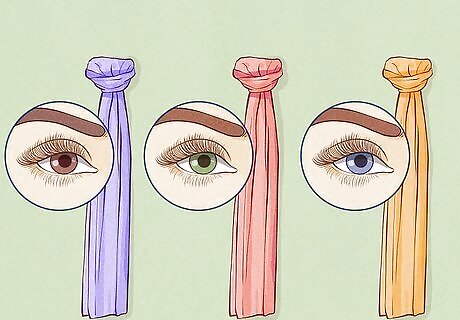
Play up your eyes by choosing hijabs in complementary colors. Brown Eyes: Give chocolate-y doe eyes a pop by contrasting them with hues of blue, teal, and violet. The warm undertones of brown from your eyes are off-set by cool shades of purple and blue, making them stand out. Green Eyes: Vibrant green eyes coordinate well with pretty shades of red, pink, and peach. These complimentary colors add cheer and interest to any ensemble. Blue Eyes: Baby blue's can be balanced beautifully with a headscarf in gold, bronze, orange, or brown. The richness of these warm tones flatters the cool notes found in your eyes.

Accentuate the undertones in your skin with the hues of your hijab. Fair Skin: Ivory undertones in skin are easy to flatter with colors on the warm-end of the color spectrum. That means choosing shades of red, orange, yellow, and brown. Golden Skin: Pretty beige and sun-kissed gold skin looks best with blue and green hues, to balance out your natural warmth. Chocolate Skin: Deep coffee-hued skin pairs wonderfully with shades of plum, coral, and peach. The bold warmth in both your headscarf and skin tone will give you a soft, welcoming look.
Pattern Play
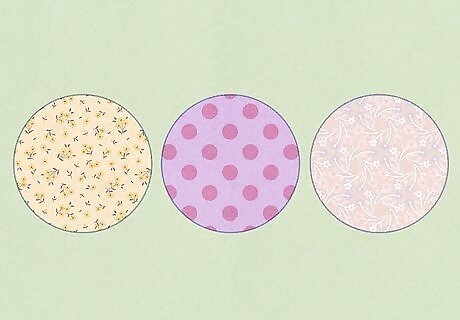
Add interest to you scarf by choosing one with a subtle pattern woven in. Small prints are easy to work with and match most outfits. Popular patterns in small prints include floral, polka-dots, plaid, herringbone, and paisley. Delicate prints can become busy and overwhelming to the eye if worn in many colors. Try to find these small prints with a limited color palette.
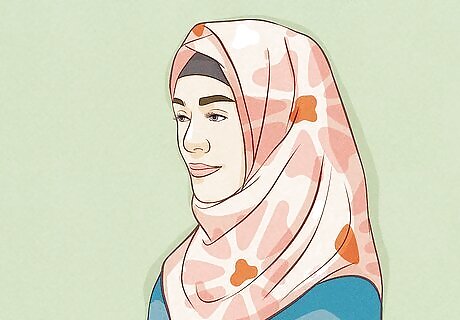
Add a bold pop to any outfit by choosing a scarf with a large print. Find patterns that range from the size of your hand and larger – this helps the scarf avoid looking too busy if it incorporates many colors. Large floral prints are a theme in big patterns, but you can also find beautiful vintage and abstract prints. Big prints give you the option of using bold color.
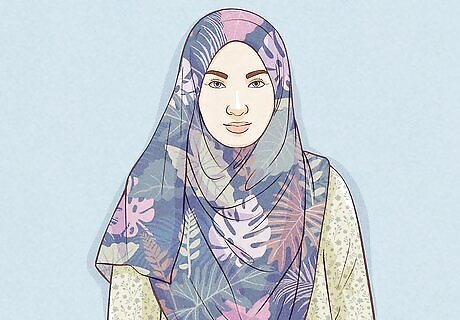
Mix patterns to add depth and intrigue to your ensemble. Wear a large-printed scarf with an outfit with small patterns or vice versa. Too many patterns can overwhelm an outfit, so avoid combining more than two or three prints. Keep your color palette muted and simplified.

Don't be afraid to be a little adventurous. Options include hanging beads along the edges of the material or selecting vibrant colors. Make sure that your understanding of hijab as general modest dress is compatible with the way you dress.
Making an Ensemble
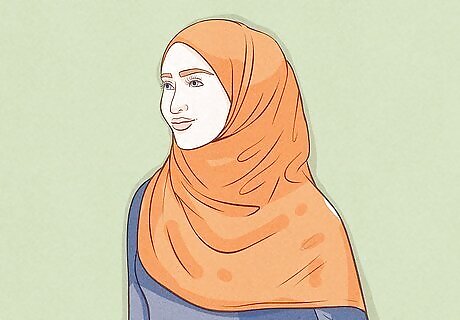
Avoid too much matching. Your scarf is meant to compliment your clothing, but choosing colors and patterns that are too "matchy-matchy" can make a pretty outfit look forced. You don’t have to wear the same colors. A blue shirt doesn’t have to be paired with a blue hijab; try a contrasting hue or tinted variation. Prints and colors do not have to “match” to “go”
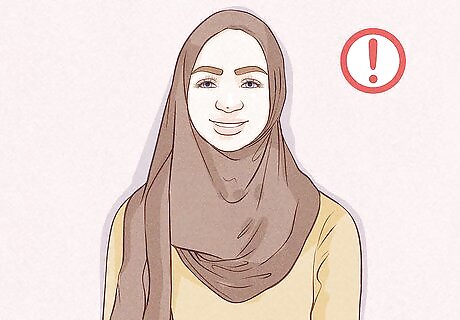
Don’t overwhelm your outfit with the addition of your scarf. If your outfit is brightly hued or busy, then try wearing a light or dark colored scarf to avoid gaudiness Wearing a simple or monochromatic ensemble can be spruced up with the addition of a busier or brighter hijab. Solid colors can be juxtaposed nicely next to each other, but do so in moderation.
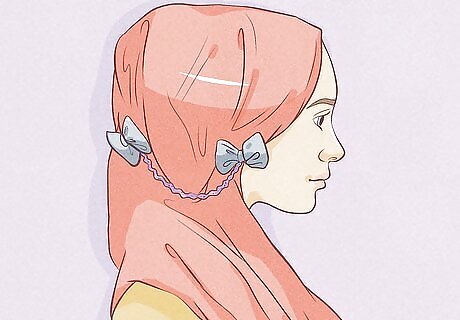
Add some beautiful pins and ribbons. This makes the overall look stylish and elegant.
Exploring Different Ways to Wrap
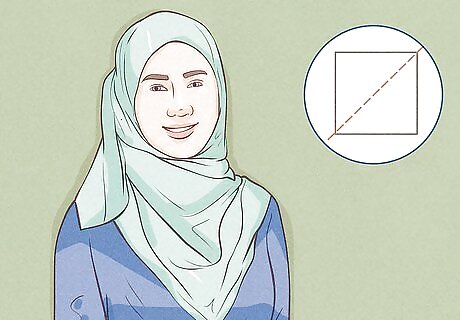
Try the “Square Hijab.” This is the most basic way to wear your scarf. Start with a square shaped scarf and fold it in half, forming a triangle. Wrap it around your head, with the folded strip going across your forehead. Pin the two sides under your chin Take the loose ends from under your chin and wrap in opposite directions around the back of your head Tie in a knot or bow at the nape of your neck
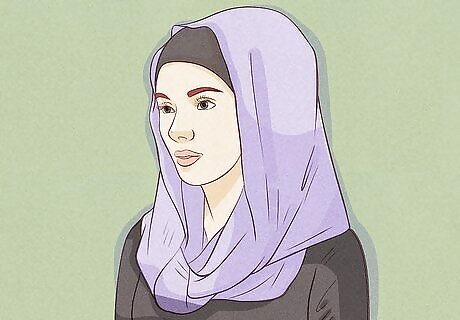
Try the Kuwaiti Hijab. This is a traditional style headscarf from Kuwait, and is easy to manage with a few steps. Take a long oblong shaped scarf, and wrap it around your head with the ends in the front Tie the ends in a large knot under your chin Wrap one of the ends around your head, and pin behind your ear Repeat the previous step with the other loose end from under your chin If your scarf is long enough, wrap around your shoulders and pin again near your neck or shoulders. If not, pin again under the chin.
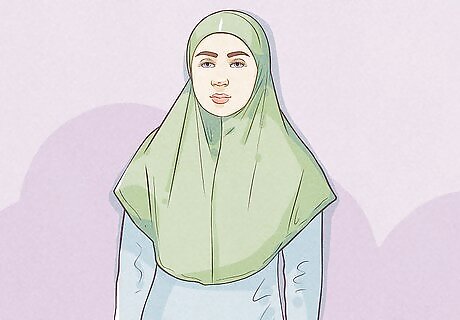
Try the “Amira (princess) Hijab.” This is the most basic way to use two scarves together. Use a thick headband or square scarf folded in the bandana style, and tie at the nape of the neck Take a second long oblong shaped scarf and wrap around your head; pin under the chin Wrap the two ends under the chin and over the head; pin behind the ears. The scarf should be loosely draped under the chin, giving a flowing, elegant appearance.
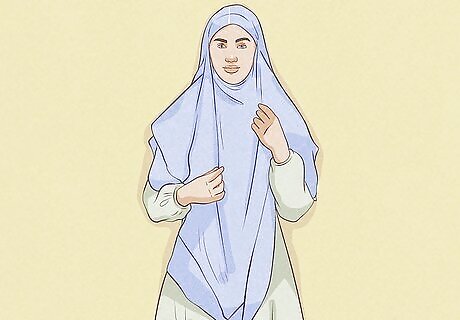
Wear a triangular scarf. Take a scarf on your head and leave equal sides. Pin the scarf tightly from the chin Take one side over your head to your cheeks and pin it again. Take the other side and cover your chest with it.
Adding Accessories
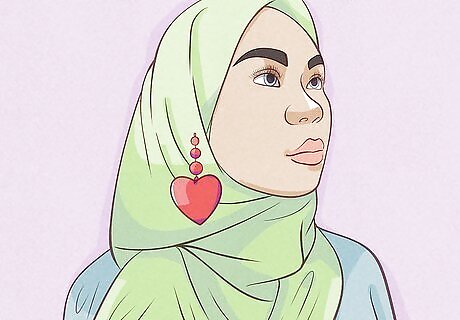
Enhance your scarf with additional accessories. Pin style: Safety pins and straight pins are necessary for holding the hijab in place, but instead of the traditional silver style, it is easy to find pins with pretty beads or colors. Add a stiff-backed headband over the top of your scarf for extra support and interest. Use vintage brooches to pin the sides of your scarf instead of pins. Create texture by purchasing scarves with embroidery or beading, or add your own to a scarf you already own.
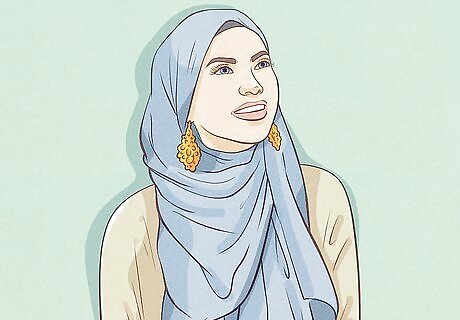
Wear jewelry with your hijab to complete your outfit Your scarf can be tucked behind your ears (especially in the Amira style), and allow for the wearing of earrings. Drape long necklaces over your neck scarf to maintain proper covering Pretty, dainty necklaces can be placed over your scarf and peek between folds of fabric for a simple look.















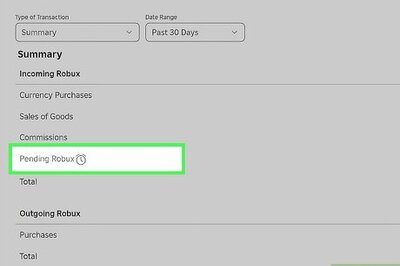
Comments
0 comment